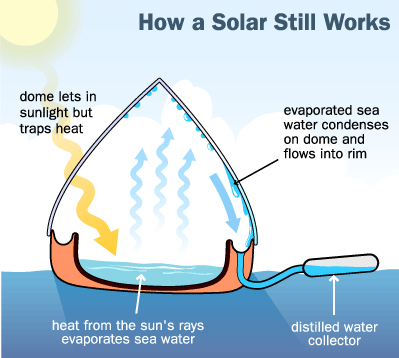by Jen Stevenson
In a recent post, we talked about how Puerto Rico could benefit from electricity produced by microgrids. (We’re still waiting to hear back from Elon Musk, in case you were wondering.) Progress there is moving slowly. Hurricane Maria struck on September 20th and people are still driving half an hour for cell service to call family in the States to get news about their own island. Food is being delivered to some places by helicopter. And while many don’t have power, almost as many don’t have access to clean drinking water.
Let that sink in for a minute.
Picture yourself going for one day without water. Drinking water. Do you drink something you know may make you sick? What about water for cooking? Water for a shower? Water to do laundry. Water to flush your toilet. Water to operate a sewage plant. For us, water infrastructure is so out of sight, out of mind that we take for granted the ability to turn on the tap, flush, or hit a button on the washing machine. But this is what life in Puerto Rico has been like for 2 months and counting. People are desperate. We’ve seen cases where they’ve used water from a Superfund site, created makeshift spouts on the side of the road, and are making multiple trips to area stores every day in hopes of finding something to drink.
People have taken PVC pipes and line up wherever a makeshift spout has been created to collect water for their daily needs. Image from NPR.
When thinking about access to clean water, one of the most obvious solutions is rain harvesting; rainwater is naturally uncontaminated. But in order to do this, one is dependent on the next rainfall to get water, which isn’t going to work in a country that has extreme freshwater needs. Bottled water, ignoring for a second that it just isn’t an environmentally-friendly business plan to start with, isn’t a sustainable long-term option. And who wants to depend on whether a cargo ship was able to deliver its shipment on time or if a helicopter was able to make the delivery that day? Puerto Ricans need water. Ironically, they are surrounded by it. The technology to purify and desalinate it exists.
One example of this technology is a solar still. A solar still uses the sun’s heat to evaporate dirty (or salty) water. The condensation (distilled water) is collected and stored in a separate container. Badaboom, badabing. The collected condensation is drinkable! It is an artificial re-creation of the rain cycle.
This image, from suryaurza.com, shows the simple science a solar still uses to produce fresh water. It really is a teeny microcosm of the natural rain cycle and prime example of biomimicry.
It’s an elegant design that has been used for centuries, but a modern solar still costs a few hundred dollars. Recently, we at Climable learned about a new solar still product that was designed to produce more water at a much more affordable price.
Sunny Clean Water was born out of a research project conducted by researchers at the University at Buffalo, NY. They received funding through NEXUS-NY, a clean energy seed accelerator, and developed low-cost materials that actually distill contaminated water faster than traditional stills. According to their research, their 1 meter still can produce a liter of water an hour. At that rate, one of their stills could provide an entire family with a reliable source of fresh water until the bigger water distribution issues are fixed.
This photo was taken by one of the creators of the Sunny Clean Water affordable solar still. If the recommended amount of water a person should drink each day is 8 glasses, that translates to 1.89 liters, which is totally feasible with this still.
Learn more at Sciencemag.org.
We think the ramifications of this new product, which isn't available for purchase quite yet, are huge. We believe that if areas (especially islands) in hurricane, typhoon, monsoon and general flood-prone zones had stills on hand, the amount of post-event suffering like we are seeing in Puerto Rico could be avoided. Solar stills should be included as part of any city, state, or town’s disaster preparedness plan and should be made widely available to citizens the second water quality and availability is jeopardized. Do you agree? What do you think would be the best way to get cities to engage in stockpiling stills? We’d love to hear your thoughts!





